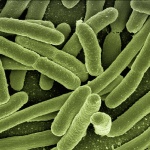
News • Infections
Killing bacteria by hacking plastics with silver and electricity
Researchers at the Swedish Medical Nanoscience Center at Karolinska Institutet have developed an innovative way of hacking conducting plastics so as to prevent bacterial growth.






















